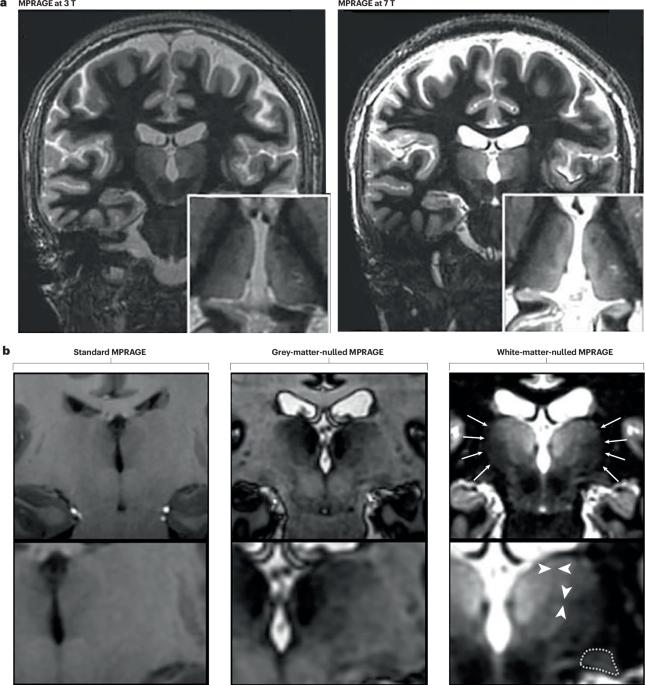人类丘脑核标准化神经成像方法路线图
IF 28.7
1区 医学
Q1 NEUROSCIENCES
引用次数: 0
摘要
丘脑在介导大脑皮层与皮层下之间的相互作用方面起着关键作用,但在神经影像学研究中却常常被忽视,因为这些研究大多侧重于大脑皮层结构和活动的变化。丘脑被忽视的主要原因之一是,通过神经影像学对单个丘脑核的划分仍存在争议。事实上,神经影像图谱在包括哪些丘脑核以及如何划分丘脑核方面存在很大差异。在此,我们回顾了神经影像数据中丘脑核分割的现有方法和新兴方法,并考虑了现有技术在研究和临床应用方面的局限性。针对这些挑战,我们提出了改进人类神经影像丘脑核分割的路线图,进而协调研究方法并推进临床应用。我们相信,要实现这一目标需要集体的努力。我们希望这将最终导致丘脑核本身被视为关键的脑区,而不是(像目前通常认为的那样)仅仅是皮层和皮层下区域之间的通道。本文章由计算机程序翻译,如有差异,请以英文原文为准。


A roadmap towards standardized neuroimaging approaches for human thalamic nuclei
The thalamus has a key role in mediating cortical–subcortical interactions but is often neglected in neuroimaging studies, which mostly focus on changes in cortical structure and activity. One of the main reasons for the thalamus being overlooked is that the delineation of individual thalamic nuclei via neuroimaging remains controversial. Indeed, neuroimaging atlases vary substantially regarding which thalamic nuclei are included and how their delineations were established. Here, we review current and emerging methods for thalamic nuclei segmentation in neuroimaging data and consider the limitations of existing techniques in terms of their research and clinical applicability. We address these challenges by proposing a roadmap to improve thalamic nuclei segmentation in human neuroimaging and, in turn, harmonize research approaches and advance clinical applications. We believe that a collective effort is required to achieve this. We hope that this will ultimately lead to the thalamic nuclei being regarded as key brain regions in their own right and not (as often currently assumed) as simply a gateway between cortical and subcortical regions. The human thalamus comprises multiple nuclei with distinct connectivity patterns and anatomical features; however, current neuroimaging approaches have a limited capacity to delinate individual thalamic nuclei. Segobin and colleagues outline the challenges that this presents to our understanding of the function of these nuclei and propose a roadmap for the future of thalamic neuroimaging.
求助全文
通过发布文献求助,成功后即可免费获取论文全文。
去求助
来源期刊

Nature Reviews Neuroscience
NEUROSCIENCES-
自引率
0.60%
发文量
104
期刊介绍:
Nature Reviews Neuroscience is a multidisciplinary journal that covers various fields within neuroscience, aiming to offer a comprehensive understanding of the structure and function of the central nervous system. Advances in molecular, developmental, and cognitive neuroscience, facilitated by powerful experimental techniques and theoretical approaches, have made enduring neurobiological questions more accessible. Nature Reviews Neuroscience serves as a reliable and accessible resource, addressing the breadth and depth of modern neuroscience. It acts as an authoritative and engaging reference for scientists interested in all aspects of neuroscience.
 求助内容:
求助内容: 应助结果提醒方式:
应助结果提醒方式:


